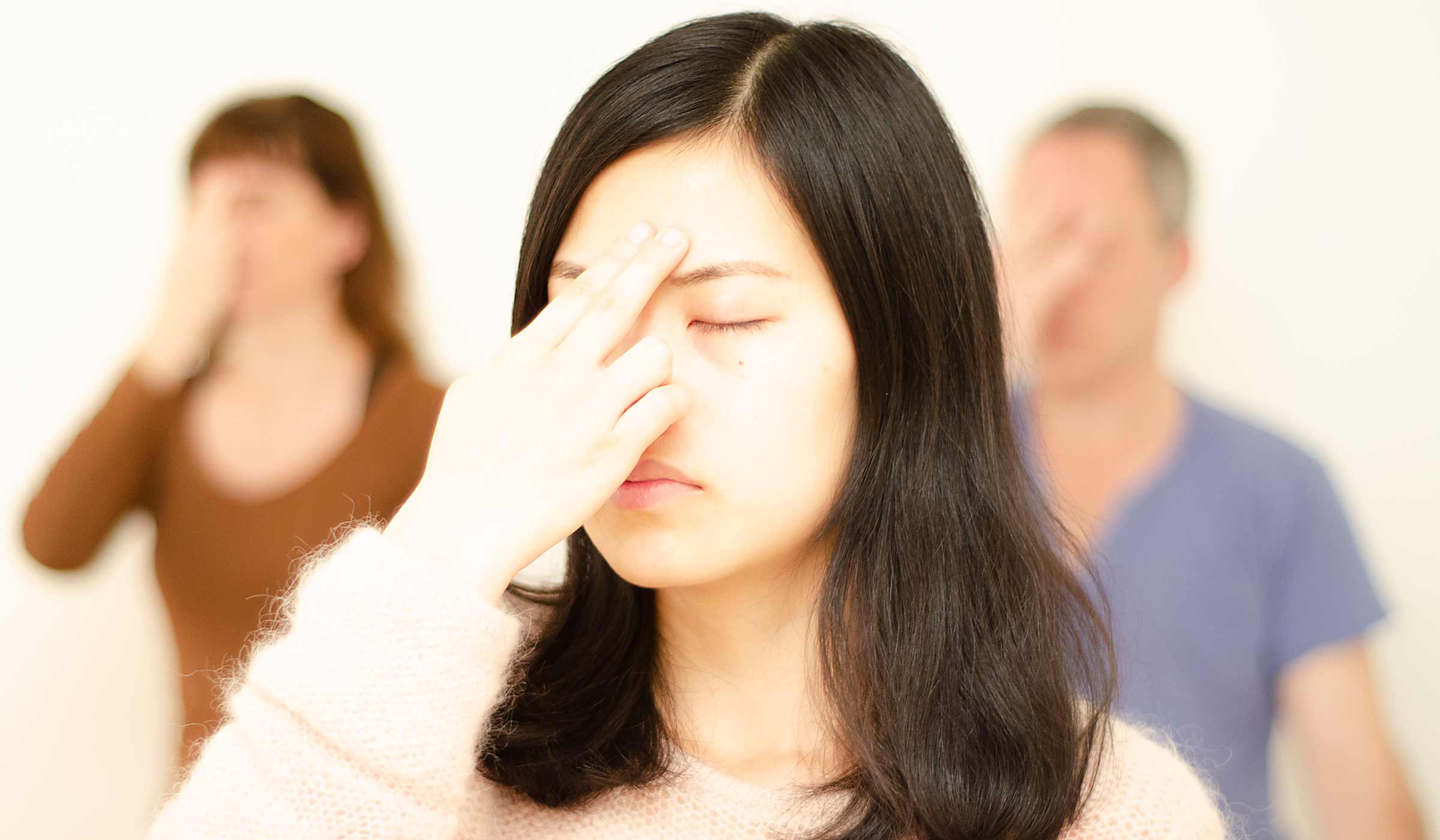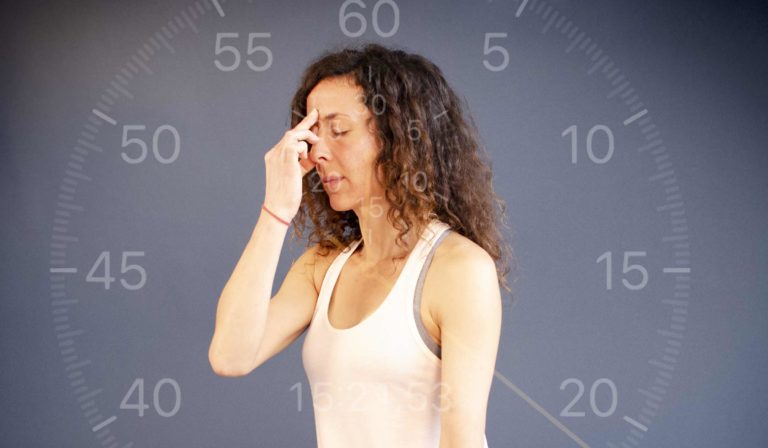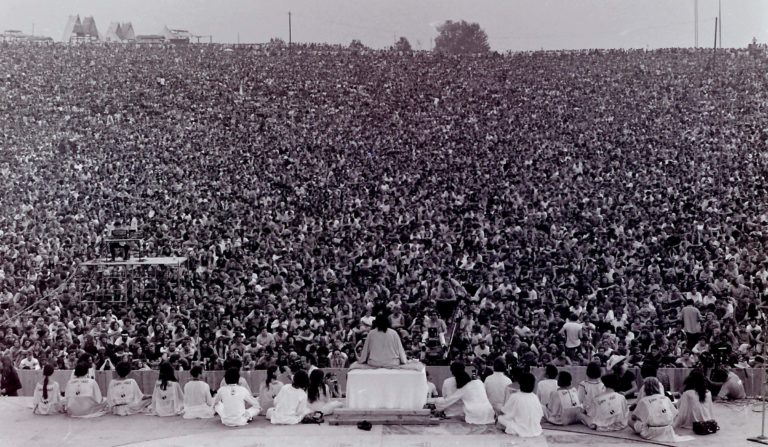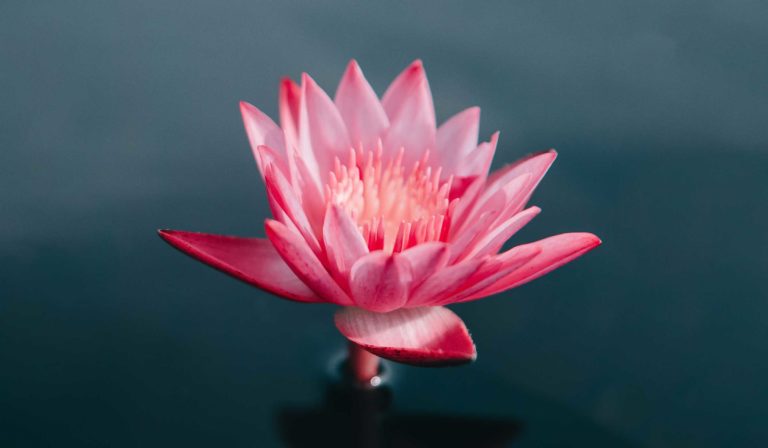If you have tried the original breathing exercises of hatha yoga, chances are that you have had an uncomfortable experience. The bliss-inducing breathing you expected might instead have felt like a near suffocation experience. The truth is that pranayama is both challenging and subtle and that you can easily miss the target. To avoid frustration, you need the right guidance. Let me share my take on the best way to learn pranayama, how to bypass the traps and benefit from it from day one.
Why I know what I am talking about
The tradition I belong to is one of the few modern yoga traditions that embraces and values pranayama. Several of my teachers and colleagues, have taken pranayama to an exceptionally far extent.
Pranayama is one of my favourite yogic practices. I have 20 years of experience with this discipline. For most of this time, it has been a daily practice. In some periods I have practised twice daily. In 2002 I started teaching yoga, and since then thousands of people have learned pranayama with me both in city classes and on yoga retreats.
What is pranayama exactly?
Pranayamas are rigorous and demanding practices that bring about mastery of the breath. The name itself suggests that they aim at influencing our life force, or prana. You do so by controlling the breath, and purifying the pranic network so as to awaken more and more prana.
A critical characteristic of pranayama is breath retention, kumbhaka. With kumbhaka you train your capacity to hold your breath for longer and longer time. It can be done after the in-breath or after the out-breath, which is more challenging.
The other most crucial objective in pranayama is to slow the breath down. When you breathe so slowly that you are on the limit of your capacity, you will in the beginning experience discomfort, anxiety and even fear. With a correct practice, you will learn to experience all this with equanimity and thus dissolve it.
As pranayama clears out fear and tensions in the nervous system, the prana that was bound by these blocks becomes available. Since the mind-stuff is tied to our energetic state, the shift in energy has consequences for our mental and emotional state as well. It brings about clarity of thought, willpower and optimism.
During the twentieth century, yoga poses took over as the dominating characteristic of yoga. Before this time, yoga was associated with pranayama and meditation more than anything else. Nowadays, pranayama is a much less common feature. Most yoga teachers today have but little knowledge in this field.
How should beginners approach pranayama?
Many parameters influence pranayama, and there are many pitfalls. If you practice pranayama incorrectly or under the wrong conditions you are likely to give up and end up never benefiting from it. Therefore you should adopt a rigorous approach to yogic breathing exercises. Getting it right and learning pranayama will bring your yoga practice to the next level.
Follow my advice in this article to practice pranayama safely and harmoniously. With this approach, even total beginners can successfully include pranayama in their yoga practice.
Keep on reading to find out how.
Pranayama should not be an isolated practice
First of all, pranayama should not be a separate practice, especially not for beginners. Other exercises are necessary to make pranayama accessible and to harmonise its effects. The best way to learn pranayama is to integrate them in long yoga sessions that combine yoga poses, pranayama and meditation.
You should do yoga poses before pranayama, and they should be done slowly and consciously so that your body and your nervous system calms down. Doing this will activate your parasympathetic nervous system. The famous meditation researcher Herbert Benson calls this process the relaxation response.
By triggering the relaxation response with yoga poses before breathing exercises, both your body and your mind get prepared. But it needs to be the right kind of poses. It should be static poses or gentle dynamic movements done consciously and attentively. Also, holding the breath in poses and synchronising breath with slow movements is good for stretching and softening up the breath.
Yoga poses make you more fit for sitting
You should practice pranayama seated in a proper meditation pose. Correct sitting is essential for three reasons:
1. You need the stability that only such a posture can offer
2. You need to be able to perform certain energy locks
3. By sitting correctly, the energy released by the practice can flow harmoniously
Don’t despair if you can’t sit in the full lotus pose. I recommend sitting in sukhasana, the easy pose, with a cushion under your buttocks. This pose is the easiest of all meditation poses, and it perfect for pranayama. But still, for most beginners sitting even in the easiest of yoga poses it quickly becomes uncomfortable.
Doing a full programme of yoga poses will warm up your body and make your hips and legs more supple. As a result, sitting will be more comfortable, and you will be able to sit longer. The calming effect yoga poses have on your mind will also make it easier for you to accept any discomfort you may feel from the posture.
Preparatory breathing exercises
In some modern yoga styles, they will teach you breath awareness and various light belly breath techniques and call it pranayama. In our tradition, we make use of such exercises as well, but we make a distinction between them and the actual pranayama. For the sake of clear communication, the term pranayama is best used only for breathing exercises described in hatha yoga source texts.
The light preliminary techniques are useful though and do have a place as warm-ups for the traditional hatha yoga methods. We like to place them at the very beginning of a yoga session as a gentle introduction. I mainly use two techniques called the wave breath and the complete breath.
Meditate after pranayama for a harmonious effect
When practising pranayama correctly, you get into a slightly altered state of consciousness. In this state, your thought processes will be a little bit different from your normal state. You also soften up the barriers to the subconscious. Unconscious psychic material released from the breath spills over into your conscious mind. The more open you are towards the content of your mind during this time window, the deeper the effects will be.
But there is more to it.
Meditation is not only important immediately after pranayama but regular meditation is essential to learning to keep an equanimous attitude during breathing exercises. As you get this, pranayama will become more and more enjoyable.
When can you start pranayama?
Some teachers of modern yoga styles claim that you need to master yoga poses before going on to pranayama. That is not correct. If you approach pranayama the way I teach it, you can start pranayama right from the start, even as a total beginner to yoga.
But, as I have already written, poses are great to prepare for pranayama. If you intend to practice pranayama without adding other practices in the same session, then experience from yoga poses is of value. So is experience from meditation. But be warned, I don’t recommend this way of practising pranayama for beginners.
The best way to learn pranayama is to be regular
Pranayama is a long term project. For your nervous system and your mind to adapt to the practice, you need time. Expect to make progress over months and years.
For an enjoyable practice and to make progress, you also need regularity. To be regular means you should try to practice at the very least once a week. Twice a week is better. If you really want to make progress slowing down your breath and exploring pranayama, you should practice every day. And it should be at the same time of the day.
If you practice pranayama as a stand-alone practice, regularity is much more critical, and you need to practice more often. When you practice pranayama combined with other techniques in the same session, then regularity is less critical. Then you can make good progress from practising only one session a week.
When learning pranayama, rushing will slow you down
It is a misunderstanding that you should avoid effort when doing pranayama. You should encounter some resistance. With prolonged practise, you will gradually dissolve resistance, and your breath will become slower and slower. The slower the breathing, the deeper the tensions you will reach.
The thing is that you can push yourself too hard. If your practice triggers more discomfort than you are capable of harmoniously experiencing, you will not be able to dissolve it. You will stay in struggle and even over time, your breath will not become slower. If you push so hard that you are not able to complete a breathing session as you set out to do it, then you need to lower your ambition. Only move forward when you are comfortable with your current level of difficulty.
Learn basic pranayama first
The major pranayamas come in different versions and different levels of difficulty. As a beginner, there is no point in attempting the advanced versions until you master the basic ones. Even the basic versions are challenging when you do them slowly enough. Having twenty years of experience, I still regularly revisit the simplest exercises. Even today, I am amazed by what they have to offer.
Let’s take the alternate breath as an example. It is one of the most important breathing exercises (it is also called nadi shodana or anuloma viloma pranayama). As a beginner, you should stay with the simplest version of this practice for at the very least several months. Then you can move on to including breath retention.
By now you know a lot about how to learn pranayama. Let’s go on looking at what to do to support your practice and make it even more enjoyable and beneficial.
Eat pranayama friendly food
You probably know that you need to wait a few hours after a meal before practising yoga poses. For pranayama, this is even more important. Ideally, wait four hours after a big meal before practising pranayama. Not having wholly digested makes is very difficult to hold your breath.
What kind of food you eat also matters. To get an enjoyable experience out of pranayama, you should avoid, alcohol, tobacco, coffee and other drugs. Instead eat healthy nutritious, light and easily digestible food. Pranayama masters also often advise against garlic, onion and strong spices. For advanced yogis who practice daily, it becomes apparent how different foods influence the breath.
Make sure your nostrils are open
If you are suffering from common cold or sinusitis, you will want to help your air passages to open up as much as possible. To relieve a blocked nose, the first thing to try is yogic nose cleansing, neti. Neti immediately clears the nose from mucus. In the long run, it improves the resistance of the mucous membranes and helps to grow more healthy cilia. The cilia are the microscopic hairs that evacuate mucus and dust with their movements.
Yoga poses also help to open up the air passages. That is another reason to do poses before pranayama.
Express insights into pranayama
By now you have understood that pranayama takes time. But there is a way to quickly get insights and that is to learn pranayama on a yoga retreat.
As you know by now, many factors influence the breath. When everything is aligned to support your pranayama practice, it is surprising how much your breathing slows down. No matter what your level is, under ideal circumstances, you will be able to surpass your usual capacity considerably.
However, as inspiring as a retreat may be, back home again in your usual environment, you will probably not be able to replicate the same quality of practice done during retreat. Therefore retreats are best used as a complement to a regular long term practice.
Key takeaways
- It takes time to learn pranayama. Progress comes over months and years.
- To practice pranayama as a separate discipline you need experience of yoga poses and or meditation. In this case you should practice pranayama daily, preferably at the same time every day.
- The best way for beginners to learn pranayama is to incorporate them in yoga sessions combining yoga poses, pranayama and meditation.
Pranayama on Forceful Tranquility
My website Forceful Tranquility is a great place to learn pranayama. Here you can learn pranayama in the same harmonious way as I teach it in live classes. I have integrated the pranayamas in sessions just as I have described in this article. The session includes yoga poses pranayama, yoga nidra, meditation and concentration techniques. Each session lasts for more than two hours which allows for a deep-delving practice.
My take on teaching yoga online is different. I guide my sessions with verbal instructions and audio recordings instead of using videos. Not having to look at the screen while practising gives you a much more concentrated practice. Before doing a new programme, you study written instructions, images and sometimes even short videos to prepare.




